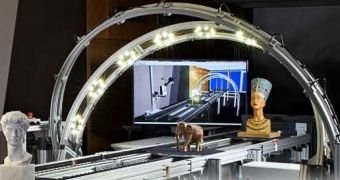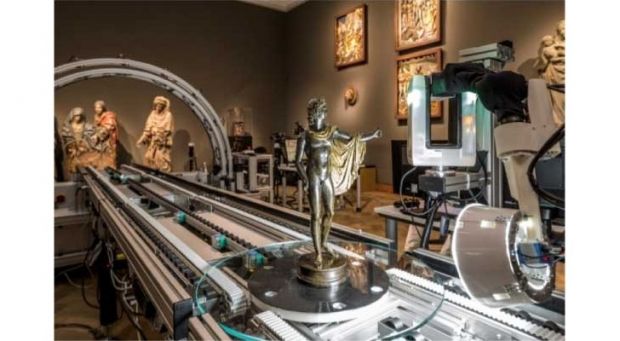3D scanners aren't exactly the fastest devices in the world, but a company called Fraunhofer IGD has created the CultLab3D scanner, which takes a novel approach to things.
Normally, you'd need to place an object on a circular platform and wait until it spins several times on its axis, while a laser or some other method of “reading” the surface is used to feed data to a computer system.
The new method from Fraunhofer IGD, however, places an object on a conveyor belt. The belt moves towards a pair of large arcs which scan the object from all angles by means of nine high resolution cameras.
Specifically, one arc holds the nine cameras, the other projects the same number of high quality ring lights.
Once the object passes through fully, a robotic arm uses a second scanner to fill in whatever gaps the arcs missed. All in all, the process shouldn't take more than five minutes according to the company, as long as the object doesn't weigh more than 110 pounds / 50 kilos and isn't more than two feet / 0.6 meters in diameter.
Museums are already using the system, but Fraunhofer intends to adapt the CultLab3D technology for small, flying robots capable of making high-quality scans of larger objects, up to whole buildings.
It shouldn't take more than a year for such drones to show up. Look forward to the time when you'll see Stonehenge and the Pyramids in top detail, straight from your living room.

 14 DAY TRIAL //
14 DAY TRIAL // 

